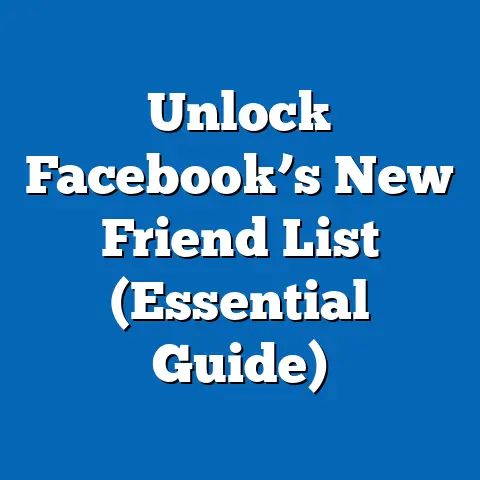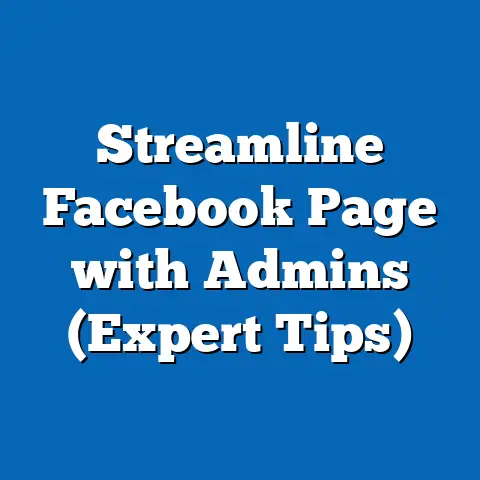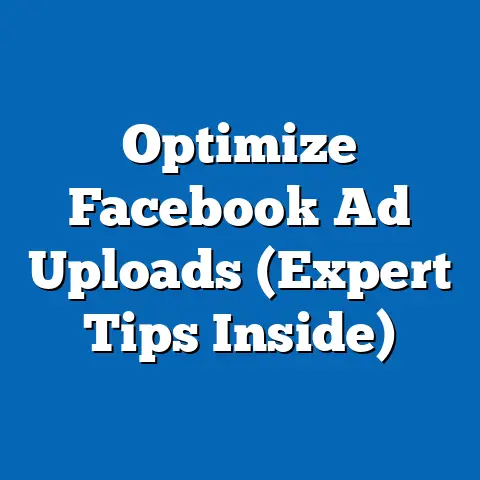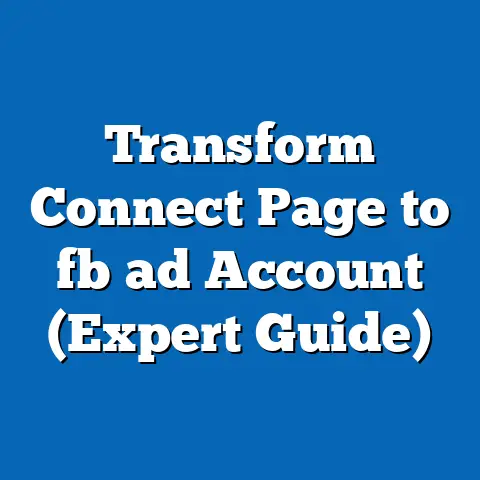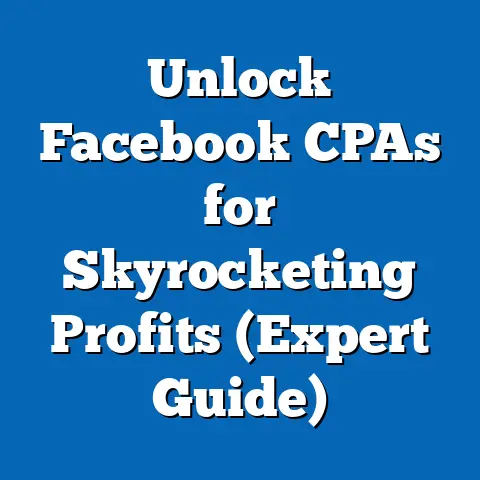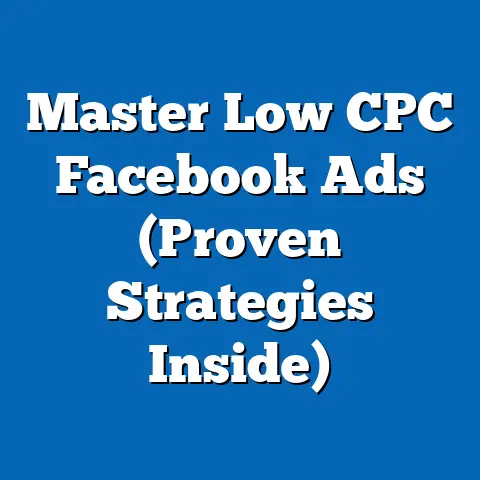Maximize Library’s Reach with Facebook Ads (Power Strategies)
Libraries today face a unique challenge. We’re cornerstones of our communities, offering a wealth of resources, from books and computers to workshops and community events. However, in a world saturated with online information and digital entertainment, attracting new visitors and keeping current patrons engaged can feel like an uphill battle. Many people simply aren’t aware of everything their local library offers, or they assume libraries are outdated relics of the past.
That’s where Facebook advertising comes in. With over 2.8 billion active users worldwide, Facebook is a powerful platform for reaching a massive audience. For libraries, this means the potential to connect with community members who might not otherwise know about the incredible resources and programs available to them. It’s not about abandoning traditional marketing, but about augmenting it with a modern, data-driven approach.
I’ve seen firsthand how effective Facebook ads can be for libraries. I recall working with a small, rural library that was struggling to increase attendance at their children’s reading programs. They were relying solely on flyers posted around town, which just weren’t cutting it. After implementing a targeted Facebook ad campaign, they saw a 40% increase in attendance within the first month! This isn’t just about numbers; it’s about connecting people with resources that can enrich their lives.
Understanding the Facebook Landscape for Libraries
Before diving into the specifics of creating Facebook ads, it’s crucial to understand the platform itself and why it’s such a valuable marketing tool for libraries.
Overview of Facebook as a Marketing Tool
Facebook is more than just a social media platform; it’s a powerful advertising engine. The platform’s sophisticated algorithms allow you to target specific demographics, interests, and behaviors, ensuring your ads reach the people most likely to be interested in your library’s offerings.
- Demographics: Facebook boasts a diverse user base, spanning all age groups, income levels, and geographic locations. This means you can likely find your target audience on the platform, whether you’re trying to reach young families, seniors, students, or anyone in between.
- Targeting: Facebook’s targeting options are incredibly granular. You can target users based on their age, location, gender, education, interests, behaviors, and even their life events (e.g., recently moved, new parents). This allows you to create highly targeted ads that resonate with specific segments of your community.
- Algorithms: Facebook’s algorithms are constantly learning and adapting, optimizing your ads for maximum reach and engagement. The platform uses data to determine which users are most likely to click on your ads, visit your website, or attend your events.
Think about it this way: instead of scattering flyers across town and hoping the right people see them, you can use Facebook to deliver your message directly to the people who are most likely to be interested.
Library-Specific Benefits of Facebook Ads
Facebook ads offer a multitude of benefits specifically tailored to the needs of libraries.
- Increased Awareness: Facebook ads can help raise awareness of your library’s resources, programs, and events among community members who might not otherwise know about them.
- Targeted Outreach: You can target specific demographics within your community, ensuring your ads reach the people who are most likely to benefit from your library’s offerings.
- Cost-Effectiveness: Compared to traditional marketing methods like print advertising or radio commercials, Facebook ads can be incredibly cost-effective, especially for smaller libraries with limited budgets.
- Measurable Results: Facebook provides detailed analytics that allow you to track the performance of your ads and measure your return on investment (ROI). This data can help you optimize your campaigns and improve your results over time.
- Event Promotion: Facebook ads are an excellent way to promote library events, such as book clubs, workshops, and author talks.
- Community Engagement: Facebook ads can help you engage with your community online, fostering a sense of connection and belonging.
Real-World Example: I once worked with a library that wanted to promote their new “Tech Tuesdays” program, which offered free computer skills workshops for seniors. They created a targeted Facebook ad campaign that focused on users aged 65 and older within a 10-mile radius of the library, highlighting the benefits of the program and providing clear instructions on how to register. The campaign resulted in a significant increase in program attendance, and the library received positive feedback from seniors who said they wouldn’t have known about the program without the Facebook ads.
Cost-Effectiveness in Action: Another library I assisted was running a summer reading program for children. They allocated $100 to a Facebook ad campaign targeting parents within their service area. The ads showcased fun program activities and highlighted the importance of reading over the summer. This modest investment led to over 50 new children registering for the program, demonstrating the power of targeted advertising even on a small budget.
Takeaway: Facebook ads can be a game-changer for libraries, offering a cost-effective and targeted way to reach new patrons, promote events, and engage with the community.
Next Steps: Start exploring Facebook’s advertising platform and familiarize yourself with its features and capabilities. Consider researching case studies of libraries that have successfully used Facebook ads to gain inspiration and learn best practices.
Crafting an Effective Facebook Ad Strategy
Creating a successful Facebook ad campaign for your library requires more than just throwing together an ad and hoping for the best. It starts with a well-defined strategy that aligns with your library’s goals and target audience.
Defining Your Goals
Before you start creating ads, it’s essential to define your goals. What do you want to achieve with your Facebook ad campaign? Are you trying to:
- Increase event attendance?
- Boost program sign-ups?
- Promote new collections?
- Increase library card registrations?
- Drive traffic to your website?
- Raise awareness of a specific service or resource?
Your goals should be specific, measurable, achievable, relevant, and time-bound (SMART). For example, instead of saying “I want to increase event attendance,” you might say “I want to increase attendance at our children’s story time by 20% in the next three months.”
Having clear goals will help you focus your efforts, track your progress, and measure your success.
Identifying Your Target Audience
Once you know what you want to achieve, you need to identify your target audience. Who are you trying to reach with your ads? Are you targeting:
- Parents with young children?
- Seniors?
- Students?
- Job seekers?
- Book lovers?
- Tech enthusiasts?
Facebook’s targeting options allow you to narrow your audience based on a variety of factors, including:
- Age: Target users within a specific age range.
- Location: Target users who live in a specific city, state, or zip code.
- Gender: Target users based on their gender.
- Interests: Target users who have expressed interest in specific topics, such as books, reading, technology, or community events.
- Behaviors: Target users based on their online behavior, such as their purchasing habits or their use of specific apps.
- Demographics: Target users based on their education level, income level, or marital status.
- Connections: Target users who are connected to your Facebook page or who are friends with people who are connected to your page.
- Custom Audiences: Upload a list of your existing patrons’ email addresses or phone numbers to create a custom audience.
- Lookalike Audiences: Create a lookalike audience based on your existing patrons or website visitors. This allows you to reach new users who are similar to your ideal audience.
Understanding Community Demographics: It’s crucial to understand the demographics of your community when creating your target audience. Consider factors such as age, income, education, ethnicity, and language. You can use data from the U.S. Census Bureau or local community surveys to gain insights into your community’s demographics.
Tailoring Ads Accordingly: Once you understand your community’s demographics, you can tailor your ads to resonate with specific segments. For example, if you’re targeting seniors, you might use larger font sizes and simpler language in your ad copy. If you’re targeting parents with young children, you might use colorful visuals and highlight the benefits of your library’s children’s programs.
I remember helping a library create a campaign to promote their ESL (English as a Second Language) classes. We specifically targeted users who had indicated an interest in learning English and who lived in areas with a high concentration of immigrant communities. The ads were written in both English and Spanish, and they highlighted the benefits of the classes, such as improving job prospects and integrating into the community. The campaign was incredibly successful, and the library saw a significant increase in ESL class enrollment.
Creating Compelling Ad Content
Your ad content is what will ultimately capture the attention of your target audience and persuade them to take action. Here are some tips for creating compelling ad content:
- Write Engaging Ad Copy: Your ad copy should be clear, concise, and engaging. Use strong verbs and descriptive language to capture the reader’s attention. Highlight the benefits of your library’s offerings and tell people what you want them to do (e.g., “Visit our website,” “Register for our event,” “Sign up for a library card”).
- Use Eye-Catching Visuals: Visuals are crucial for attracting attention on Facebook. Use high-quality images, videos, or infographics that are relevant to your ad’s message. Make sure your visuals are visually appealing and optimized for mobile devices.
- Include a Clear Call to Action: Tell people exactly what you want them to do by including a clear call to action (CTA) in your ad. Use action-oriented language, such as “Learn More,” “Sign Up,” “Register Now,” or “Visit Our Website.”
- Keep it Concise: People are scrolling quickly through their Facebook feeds, so you need to grab their attention quickly. Keep your ad copy concise and to the point.
- Use Humor (When Appropriate): Humor can be a great way to connect with your audience and make your ads more memorable. However, be sure to use humor appropriately and avoid anything that could be offensive or insensitive.
- Tell a Story: Storytelling can be a powerful way to connect with your audience on an emotional level. Share stories about how your library has helped people in your community.
- Highlight the Benefits: Focus on the benefits of your library’s offerings, rather than just the features. Tell people how your library can help them learn new skills, connect with others, or improve their lives.
The Role of Visuals: Visuals are arguably the most important element of your Facebook ad. People are naturally drawn to images and videos, so you need to use visuals that are eye-catching and relevant to your ad’s message. Consider using:
- High-quality photos of your library, staff, or events.
- Short videos showcasing your library’s resources and programs.
- Infographics that highlight key statistics or information.
- Eye-catching graphics that are visually appealing and optimized for mobile devices.
Takeaway: A well-crafted Facebook ad strategy starts with clear goals, a well-defined target audience, and compelling ad content that resonates with your community.
Next Steps: Brainstorm your library’s goals for Facebook advertising and identify your target audience for each goal. Start creating compelling ad copy and gathering eye-catching visuals that will capture the attention of your target audience.
Designing Your Facebook Ad Campaign
Now that you have a solid understanding of the Facebook landscape and a well-defined ad strategy, it’s time to design your Facebook ad campaign. This involves setting up your Facebook Business account, choosing the right ad format, and budgeting and scheduling your ads.
Setting Up Your Facebook Business Account
Before you can start running Facebook ads, you need to set up a Facebook Business Manager account. This account allows you to manage your Facebook pages, ad accounts, and other business assets in one place.
Here’s a step-by-step guide to setting up your Facebook Business Manager account:
- Go to business.facebook.com and click “Create Account.”
- Enter your business name, your name, and your work email address.
- Follow the prompts to create your account.
- Add your Facebook page to your Business Manager account. If you don’t already have a Facebook page for your library, you’ll need to create one.
- Create an ad account within your Business Manager account. This is where you’ll manage your Facebook ad campaigns.
- Add people to your Business Manager account and assign them roles. This allows you to grant access to your team members so they can help you manage your Facebook ads.
Optimizing Your Facebook Business Manager Account:
- Use a professional profile picture: Your profile picture should be your library’s logo or a high-quality photo of your library.
- Add a compelling cover photo: Your cover photo should showcase your library’s resources, programs, or events.
- Write a detailed “About” section: Your “About” section should provide information about your library’s mission, services, and contact information.
- Add a call to action button: Your call to action button should encourage people to visit your website, sign up for your newsletter, or contact you.
- Post regularly: Keep your Facebook page active by posting regularly about your library’s resources, programs, and events.
- Engage with your followers: Respond to comments and messages from your followers in a timely manner.
Choosing the Right Ad Format
Facebook offers a variety of ad formats to choose from, each with its own strengths and weaknesses. The right ad format for your campaign will depend on your goals, your target audience, and your budget.
Here are some of the most common Facebook ad formats:
- Image Ads: Image ads are the simplest and most common type of Facebook ad. They consist of a single image, ad copy, and a call to action button. Image ads are great for raising awareness, driving traffic to your website, or promoting a specific event.
- Video Ads: Video ads are a more engaging and dynamic way to reach your audience. They can be used to tell a story, showcase your library’s resources, or promote a specific event. Video ads are great for capturing attention and generating interest.
- Carousel Ads: Carousel ads allow you to showcase multiple images or videos in a single ad. This format is great for highlighting different aspects of your library’s offerings or telling a sequential story.
- Slideshow Ads: Slideshow ads are similar to video ads, but they use a series of still images instead of a video. This format is a great way to create a visually appealing ad without the expense of producing a video.
- Collection Ads: Collection ads are a mobile-first ad format that allows you to showcase a catalog of products or services. This format is great for libraries that offer a wide range of resources or programs.
- Lead Ads: Lead ads are designed to collect leads from potential customers. This format is great for libraries that want to build their email list or collect information from people who are interested in their services.
- Instant Experience Ads: Instant Experience ads are full-screen, mobile-optimized ads that load instantly when someone clicks on them. This format is great for creating an immersive and engaging experience for your audience.
When to Use Each Format Effectively:
- Image Ads: Use image ads when you have a clear and compelling visual and you want to drive traffic to your website or promote a specific event.
- Video Ads: Use video ads when you want to tell a story, showcase your library’s resources, or capture attention.
- Carousel Ads: Use carousel ads when you want to highlight different aspects of your library’s offerings or tell a sequential story.
- Slideshow Ads: Use slideshow ads when you want to create a visually appealing ad without the expense of producing a video.
- Collection Ads: Use collection ads when you want to showcase a catalog of products or services.
- Lead Ads: Use lead ads when you want to build your email list or collect information from people who are interested in your services.
- Instant Experience Ads: Use Instant Experience ads when you want to create an immersive and engaging experience for your audience.
I recall a library using a carousel ad to highlight different sections of their newly renovated building. Each image in the carousel showcased a different area – the children’s section, the teen zone, the computer lab, and the quiet reading room. The ad copy emphasized the modern amenities and the welcoming atmosphere. This campaign not only increased foot traffic but also changed the perception of the library as a stale, outdated space.
Budgeting and Scheduling Your Ads
Setting a budget and scheduling your ads are crucial steps in designing your Facebook ad campaign. You want to maximize your reach without overspending, and you want to ensure your ads are running at the times when your target audience is most likely to see them.
Budgeting:
- Start Small: If you’re new to Facebook advertising, it’s best to start with a small budget and gradually increase it as you see results.
- Set a Daily or Lifetime Budget: You can set a daily budget, which is the average amount you’re willing to spend each day, or a lifetime budget, which is the total amount you’re willing to spend over the entire duration of your campaign.
- Consider Your Goals: Your budget should be based on your goals. If you’re trying to reach a large audience, you’ll need a larger budget. If you’re targeting a smaller audience, you can get away with a smaller budget.
- Track Your ROI: Track your return on investment (ROI) to see how much you’re getting back for every dollar you spend on Facebook ads. This will help you optimize your budget and improve your results over time.
Scheduling:
- Run Ads Continuously or on a Schedule: You can run your ads continuously, which means they’ll run all the time until you pause them, or you can schedule them to run only at certain times of the day or on certain days of the week.
- Consider Your Target Audience: Your ad schedule should be based on your target audience. When are they most likely to be online and see your ads?
- Test Different Schedules: Test different ad schedules to see what works best for your target audience.
Insights on Maximizing Reach:
- Use Automatic Placements: Facebook’s automatic placements option allows the platform to automatically place your ads on the most effective platforms (Facebook, Instagram, Audience Network). This can help you maximize your reach and get the most out of your budget.
- Optimize Your Bids: Facebook allows you to choose between different bidding options, such as automatic bidding and manual bidding. Automatic bidding allows Facebook to automatically set your bids based on your goals. Manual bidding allows you to set your bids manually. Experiment with different bidding options to see what works best for your campaign.
- Use Ad Scheduling to Target Peak Times: Use ad scheduling to target peak times when your target audience is most likely to be online. For example, if you’re targeting parents with young children, you might schedule your ads to run in the evenings or on weekends.
I learned a valuable lesson about ad scheduling when working with a library that was promoting their after-school tutoring program. Initially, they ran their ads throughout the day, but they weren’t seeing the results they expected. After analyzing their data, they realized that parents were most likely to see their ads in the late afternoon, when they were picking up their children from school. By adjusting their ad schedule to focus on those peak hours, they saw a significant increase in program sign-ups.
Takeaway: Designing a successful Facebook ad campaign involves setting up your Facebook Business account, choosing the right ad format, and budgeting and scheduling your ads effectively.
Next Steps: Set up your Facebook Business Manager account and familiarize yourself with its features. Experiment with different ad formats to see what works best for your library. Create a budget and schedule for your first Facebook ad campaign.
Implementing Power Strategies for Success
Once you’ve mastered the basics of Facebook advertising, you can start implementing power strategies to take your campaigns to the next level. These strategies involve leveraging community partnerships, utilizing Facebook events, and running contests and giveaways.
Leveraging Community Partnerships
Partnering with local organizations and businesses can significantly enhance your ad reach and credibility. By collaborating with other community stakeholders, you can tap into their existing audiences and reach new potential patrons.
- Cross-Promotional Campaigns: Partner with local businesses to run cross-promotional campaigns. For example, you could offer a discount at a local bookstore to anyone who shows their library card. In return, the bookstore could promote your library’s events on their Facebook page.
- Joint Events: Partner with local organizations to host joint events. For example, you could partner with a local museum to host a family-friendly event that combines art and literacy. Promote the event on both your Facebook pages and target your ads to both your audiences.
- Co-Branded Ads: Create co-branded ads that feature both your library’s logo and the logo of your partner organization. This can help you reach a wider audience and increase your credibility.
- Influencer Marketing: Partner with local influencers to promote your library’s resources and programs. Influencers can create content that resonates with their followers and encourages them to visit your library.
How to Find and Build Partnerships:
- Identify Potential Partners: Identify local organizations and businesses that share your values and target a similar audience.
- Reach Out and Introduce Yourself: Reach out to potential partners and introduce yourself and your library. Explain how a partnership could benefit both organizations.
- Brainstorm Ideas: Brainstorm ideas for collaborative campaigns and events.
- Formalize the Partnership: Formalize the partnership with a written agreement that outlines the responsibilities of each organization.
I saw a great example of community partnership in action when a library collaborated with a local coffee shop. The library offered a free book with every coffee purchase, and the coffee shop offered a discount to library card holders. The campaign was promoted on both Facebook pages, and it resulted in increased traffic for both the library and the coffee shop. It was a win-win situation for everyone involved.
Utilizing Facebook Events
Facebook Events are a powerful tool for promoting library events and reaching local community members. By creating and promoting your events on Facebook, you can increase attendance, generate buzz, and engage with your community online.
- Create Detailed Event Pages: Create detailed event pages that include all the essential information, such as the date, time, location, description, and agenda.
- Use Eye-Catching Visuals: Use eye-catching visuals to promote your events. Include photos or videos of past events or create graphics that highlight the key features of the event.
- Target Local Community Members: Target your event ads to local community members who are likely to be interested in the event. Use Facebook’s targeting options to narrow your audience based on age, location, interests, and behaviors.
- Promote Your Events Regularly: Promote your events regularly on your Facebook page and in your Facebook ads.
- Engage with Attendees: Engage with attendees before, during, and after the event. Answer questions, post updates, and encourage people to share their experiences online.
- Use Facebook Live: Use Facebook Live to stream your events to a wider audience. This is a great way to reach people who can’t attend in person.
Tips for Creating Engaging Event Pages:
- Write a Compelling Description: Write a compelling description that highlights the benefits of attending the event.
- Include a Clear Call to Action: Include a clear call to action that tells people what you want them to do (e.g., “Register Now,” “Learn More,” “RSVP”).
- Add a Map: Add a map to your event page so people can easily find the location.
- Include Photos and Videos: Include photos and videos of past events to give people a sense of what to expect.
- Create a Facebook Group: Create a Facebook group for the event so attendees can connect with each other and share information.
A library I worked with used Facebook Events to promote their annual summer reading program kickoff party. They created a detailed event page with photos from past events, a map of the location, and a list of activities. They targeted their ads to parents with young children within a 10-mile radius of the library. The event was a huge success, with record attendance and positive feedback from the community.
Running Contests and Giveaways
Contests and giveaways are a great way to boost engagement and visibility on Facebook. By offering prizes that are relevant to your library’s offerings, you can attract new followers, generate leads, and increase awareness of your resources and programs.
- Choose a Relevant Prize: Choose a prize that is relevant to your library’s offerings and that will appeal to your target audience. For example, you could give away a gift certificate to a local bookstore, a free library card, or a basket of books.
- Set Clear Rules: Set clear rules for the contest or giveaway, including the entry requirements, the deadline, and the eligibility criteria.
- Promote the Contest Widely: Promote the contest widely on your Facebook page and in your Facebook ads.
- Make it Easy to Enter: Make it easy for people to enter the contest. For example, you could ask them to like your page, share a post, or tag a friend.
- Use a Third-Party App: Use a third-party app to manage your contest and ensure fair participation.
- Announce the Winner: Announce the winner of the contest on your Facebook page and congratulate them publicly.
Best Practices for Implementation:
- Comply with Facebook’s Guidelines: Make sure your contest complies with Facebook’s guidelines.
- Use a Disclaimer: Include a disclaimer that states that the contest is not sponsored, endorsed, or administered by Facebook.
- Collect Email Addresses: Use the contest as an opportunity to collect email addresses from potential patrons.
- Follow Up with Participants: Follow up with participants after the contest is over. Thank them for participating and encourage them to visit your library.
A library I advised ran a contest to celebrate National Library Week. They asked people to share their favorite book and tag their local library. The prize was a gift certificate to a local bookstore. The contest generated a lot of engagement on their Facebook page and helped them reach a wider audience.
Takeaway: Implementing power strategies such as leveraging community partnerships, utilizing Facebook events, and running contests and giveaways can significantly enhance your library’s Facebook advertising efforts.
Next Steps: Identify potential community partners and brainstorm ideas for collaborative campaigns. Start planning your next Facebook event and consider running a contest or giveaway to boost engagement and visibility.
Analyzing and Optimizing Your Facebook Ads
The final step in creating a successful Facebook ad campaign is analyzing your results and optimizing your ads for continuous improvement. Facebook provides a wealth of data that can help you track the performance of your ads and identify areas for improvement.
Understanding Facebook Insights
Facebook Insights is a powerful tool that allows you to track the performance of your Facebook ads and monitor engagement metrics. By analyzing this data, you can gain insights into what’s working and what’s not, and you can make adjustments to your campaigns to improve your results over time.
- Reach: Reach is the number of unique people who saw your ad.
- Impressions: Impressions are the number of times your ad was displayed.
- Engagement: Engagement includes likes, comments, shares, and clicks.
- Click-Through Rate (CTR): CTR is the percentage of people who saw your ad and clicked on it.
- Cost Per Click (CPC): CPC is the average amount you paid for each click on your ad.
- Cost Per Thousand Impressions (CPM): CPM is the average amount you paid for every 1,000 impressions of your ad.
- Conversion Rate: Conversion rate is the percentage of people who clicked on your ad and completed a desired action, such as signing up for your newsletter or registering for an event.
How to Use Facebook Insights:
- Go to your Facebook page and click “Insights.”
- Select the time period you want to analyze.
- Review the data for each metric.
- Identify trends and patterns.
- Make adjustments to your campaigns based on your findings.
Monitoring Engagement Metrics:
- Likes: Track the number of likes your posts and ads receive. This is a good indicator of how well your content resonates with your audience.
- Comments: Monitor the comments on your posts and ads. This is a great way to engage with your audience and answer their questions.
- Shares: Track the number of shares your posts and ads receive. This is a good indicator of how valuable your content is to your audience.
- Clicks: Track the number of clicks your ads receive. This is a good indicator of how effective your ad copy and visuals are.
I once worked with a library that was running a Facebook ad campaign to promote their new online learning platform. They were getting a lot of impressions, but their click-through rate was low. After analyzing their ad copy, they realized that it was too technical and didn’t clearly explain the benefits of the platform. They revised their ad copy to focus on the benefits, such as learning new skills and advancing your career, and their click-through rate increased significantly.
A/B Testing for Continuous Improvement
A/B testing, also known as split testing, is a powerful technique for optimizing your Facebook ads over time. It involves creating two or more versions of an ad with slight variations and then running them simultaneously to see which version performs better.
- Test Different Headlines: Test different headlines to see which one captures the most attention.
- Test Different Images: Test different images to see which one resonates best with your audience.
- Test Different Ad Copy: Test different ad copy to see which one is most persuasive.
- Test Different Calls to Action: Test different calls to action to see which one generates the most clicks.
- Test Different Targeting Options: Test different targeting options to see which audience is most responsive.
Tips for Effective A/B Testing:
- Test One Variable at a Time: To get accurate results, test only one variable at a time.
- Run Your Tests for a Sufficient Time: Run your tests for a sufficient time to gather enough data to make statistically significant conclusions.
- Use a Control Group: Use a control group to compare your test results against.
- Analyze Your Results Carefully: Analyze your results carefully to identify which version of your ad performed better.
- Implement Your Findings: Implement your findings by using the winning version of your ad in your future campaigns.
A library I assisted was running a Facebook ad campaign to promote their summer reading program. They created two versions of their ad, one with a photo of children reading books and one with a photo of children participating in a summer reading program activity. After running the ads for a week, they analyzed the results and found that the ad with the photo of children participating in a summer reading program activity performed significantly better. They then used that ad in their future campaigns.
Adapting Strategies Based on Feedback
Community feedback is invaluable for informing future ad campaigns and library programs. Pay attention to the comments and messages you receive on your Facebook page and in your Facebook ads. This feedback can give you insights into what your community wants and needs.
- Monitor Comments and Messages: Monitor the comments and messages you receive on your Facebook page and in your Facebook ads.
- Respond to Questions and Concerns: Respond to questions and concerns in a timely and professional manner.
- Ask for Feedback: Ask for feedback from your community on a regular basis. You can use surveys, polls, or focus groups to gather feedback.
- Use Feedback to Improve Your Campaigns: Use feedback to improve your campaigns by making adjustments to your ad copy, visuals, targeting options, and scheduling.
- Use Feedback to Improve Your Programs: Use feedback to improve your programs by making adjustments to your offerings, activities, and services.
The Significance of Community Feedback:
- Helps You Understand Your Audience: Community feedback helps you understand your audience’s needs, wants, and preferences.
- Improves Your Campaigns: Community feedback can help you improve your campaigns by making them more relevant and engaging.
- Builds Trust and Loyalty: Responding to community feedback builds trust and loyalty.
- Creates a Sense of Community: Asking for and using community feedback creates a sense of community.
I recall a library receiving negative feedback on their Facebook page about the limited hours of their computer lab. They responded to the feedback by extending the hours of the computer lab and promoting the new hours on their Facebook page. The community responded positively to the change, and the library saw an increase in computer lab usage.
Takeaway: Analyzing and optimizing your Facebook ads is an ongoing process. By understanding Facebook Insights, A/B testing your ads, and adapting your strategies based on feedback, you can continuously improve your results and maximize your library’s reach.
Next Steps: Start tracking your Facebook Insights and analyzing your ad performance. Begin A/B testing different elements of your ads to see what works best. Actively solicit and respond to feedback from your community.
Conclusion
Libraries stand at the intersection of tradition and technology, and Facebook advertising provides a powerful bridge to connect with our communities in a meaningful way. We’ve explored how to navigate the Facebook landscape, craft effective ad strategies, design compelling campaigns, implement power strategies, and analyze and optimize our efforts.
Remember, the key to success lies in continuous learning and adaptation. Facebook’s algorithms and features are constantly evolving, so it’s essential to stay up-to-date on the latest best practices and experiment with new approaches.
By embracing these strategies and continuously evolving our marketing efforts, we can ensure that libraries remain relevant, vibrant, and essential resources for our communities in an increasingly digital world. We can connect people with the knowledge, resources, and community they need to thrive. We can empower individuals, strengthen communities, and build a brighter future for all.
So, go forth and harness the power of Facebook ads to maximize your library’s reach and engage more effectively with your community. The possibilities are endless, and the impact can be profound. Let’s work together to ensure that libraries continue to be beacons of knowledge, connection, and opportunity for generations to come.

